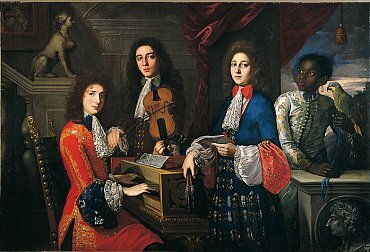An exhibition at the Uffizi Gallery celebrates the Grand Prince Ferdinando de' Medici

2013 marks the 300th anniversary of the death of Grand Prince Ferdinando de 'Medici, heir to the throne of Tuscany, son of Grand Duke Cosimo III and Marguerite Louise d'Orléans, who died before his father, and never hold full duties of the state.
Now Florence dedicates a tribute to this outstanding figure with an exhibition at the Uffizi Gallery which will run until November 3. Ferdinand in fact stood out for a particular love for all-round culture, which included a deep interest in collecting and patronage but also for the theater, music and sciences. He was a real beacon for the Florentine culture of the late seventeenth century.
The current exhibition at the Uffizi Gallery wants to pay tribute to this extraordinary personality, eclectic and varied, highlighting peculiarities and characteristics both with regard to art collecting and the passion for performing arts.
The halls of the gallery that were once occupied by the State Archives presents significant works and documents for the biography of the Tuscan Dolphin. The first sections show the youthful interests of the prince, especially facing the music and the theater. Hence the villa Pratolino, an ideal setting for the entertainment of the prince, his musicians, his librettists and the men who took care of his highly selected education. Another section is then devoted to the marriage with Violante Beatrice of Bavaria, at the ceremonies of the Florentine time and the work of adapting the Pitti Palace.
The following rooms are focused on the first phase of art collecting art, showing the favorite painters of the young prince. Ferdinand distinguished himself particularly in terms of collecting and patronage especially in the areas of still life and sculpture. He identified in the local artist Bartolomeo Bimbi the one who could best represent the current most modern and fully Baroque artistic trend linked to the still life. At the same time, thanks to an extensive network of consultants, brokers and experts, he kept an eye on the foreign market. In the field of sculpture Ferdinando protected instead the local masters and especially those trained at the Medici Academy in Rome.
But Ferdinand did not just collect works by contemporary artists, he became constantly interested in Italian and foreign painting of the VI-VII century. He brough in Florence numerous paintings, many of which still constitute the richness of Italian and Florentine museums.
Alongside these monumental works, the prince also developed other collecting areas as the 'cabinet of small works' which collected the paintings of small dimensions. At the end of the seventeenth century then the artistic preferences of the prince began to vary significantly addressing the big non-Tuscan schools.
The last section of the exhibition is devoted to these final years, there are portraits and testimonies, the preparatory drawings of Foggini for a commemorative monument that was never carried out, and a number of items specially chosen to reconstruct the story of the prince and make known most of this exalted Florentine personality to the public today.
The Grand Prince. Ferdinando de' Medici (1663-1713) Collector and Patron of the Arts
Uffizi Gallery - Until November 3
Tickets: full price € 11, reduced: € 5.50 for EU citizens between 18 and 25 years old.Free for visitors under 18 and for EU citizens over 65 years old.
Hours: Tuesday-Sunday from 8:15am to 6:50pm. Closed on Mondays.











